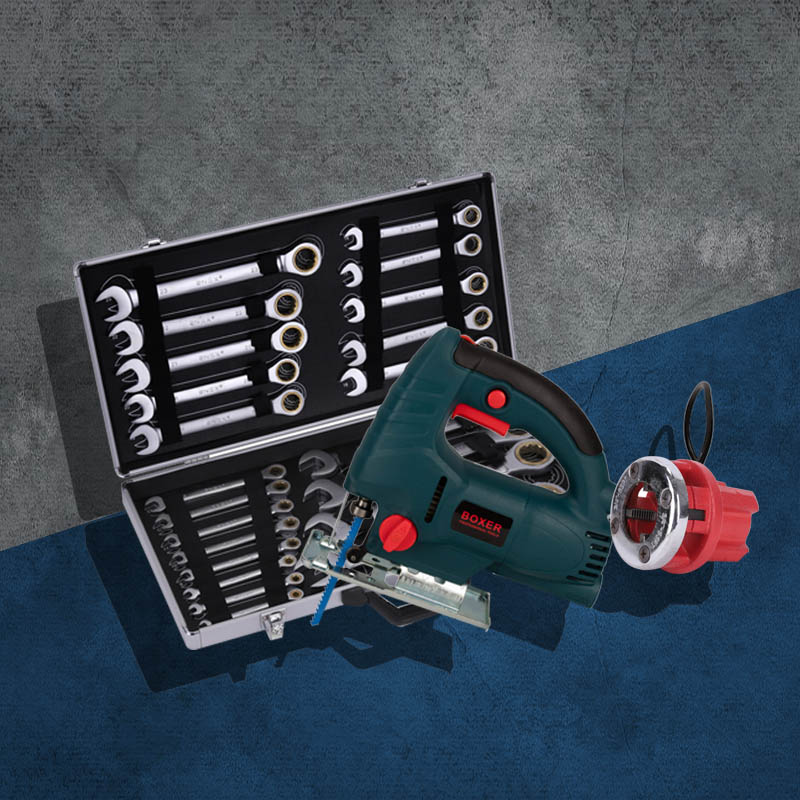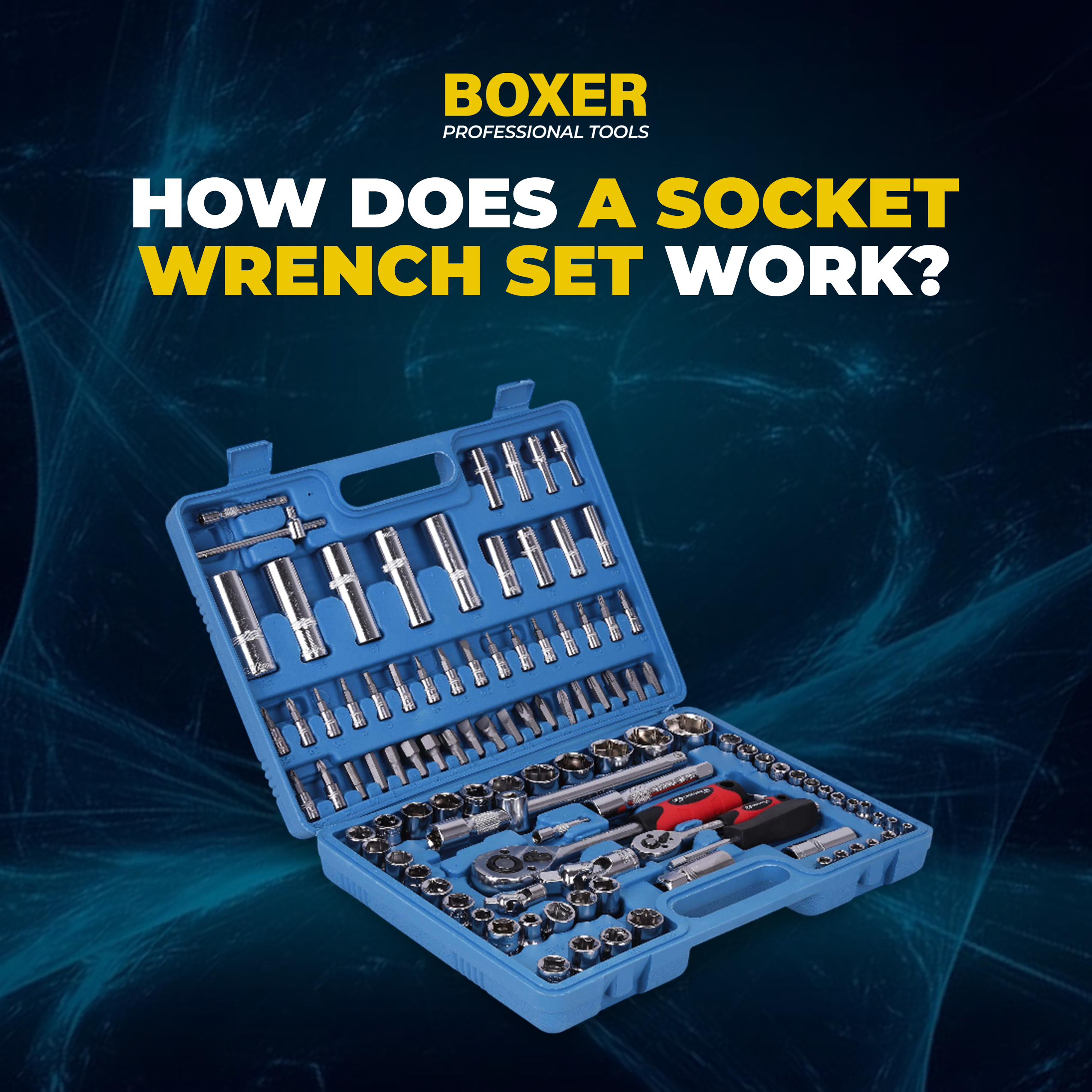
The Versatility of Hand Tools in Various Fields.
Hand tools are tools that are powered by human force rather than electricity or other sources of energy. They include hammers, screwdrivers, wrenches, pliers, saws, knives, scissors, and many more. Hand tools are widely used in various fields, such as metalworking, DIY projects, jewelry making, electrical work, woodworking and carpentry, gardening, digging, welding, manufacturing, demolition, and repairing cars. Hand tools offer many benefits over power tools, such as being cheaper, more portable, safer, quieter, more precise, and more creative. In this blog post, we will explore the versatility of hand tools and how they can help you accomplish different tasks in different fields.
Metalworking.
Metalworking is the process of shaping metal into various forms and products. Metalworking can involve cutting, bending, forging, welding, soldering, casting, and machining metal. Hand tools are important in metalworking, especially for small-scale or custom projects. Some of the hand tools used in metalworking are:
- Hammers: Hammers are used to strike metal objects or surfaces to deform or shape them. Different hammers exist for different purposes, such as ball-peen hammers for riveting or peening metal surfaces, claw hammers for pulling out nails or prying metal parts apart, sledgehammers for breaking or driving large metal objects, etc.
- Snips: Snips are scissors-like tools used to cut thin metal sheets. They have sharp blades that can cut through metal with ease. There are different types of snips for different shapes and angles of cutting, such as straight-cut snips for straight lines, left-cut snips for left curves, right-cut snips for right curves, etc.
- Shears: Shears are similar to snips but larger and more powerful. They are used to cut thicker sheets or bars of metal. They have two blades that slide past each other to shear the metal. Some shears have handles that can be operated by hand, while others have levers or pedals that can be operated by foot.
- Files: Files are tools that smooth or shape metal surfaces by rubbing them with abrasive teeth. They can remove burrs or rough edges from metal parts or create grooves or patterns on metal surfaces. There are different types of files for different shapes and sizes of filing, such as flat files for flat surfaces, round files for round surfaces, triangular files for corners or angles, etc.
Hand tools provide precision and finesse in metalworking tasks. They allow you to work with delicate or intricate metal parts or designs that may not be possible with power tools. They give you more control and feedback over the metalworking process than power tools.
DIY Projects.
DIY projects are projects that you do yourself without hiring a professional or buying a ready-made product. DIY projects can be fun and rewarding, allowing you to express your creativity and save money. DIY projects can involve various tasks such as cutting, screwing, and holding materials together. Some of the essential hand tools for DIY projects are:
- Scissors: Scissors are tools used to cut materials such as paper, fabric, plastic, etc. They have two blades that pivot around a fulcrum to cut the material. There are different types of scissors for different purposes, such as craft scissors for decorative cutting, sewing scissors for cutting fabric, kitchen scissors for cutting food, etc.
- Utility knives: Utility knives have a retractable blade that can be extended or retracted by a sliding mechanism. They are used to cut various materials such as cardboard, wood, leather, etc. They have sharp blades that can cut through materials with ease.
- Wrenches: Wrenches are tools used to tighten or loosen nuts and bolts. They have a handle and a jaw that grips the nut or bolt head. There are different types of wrenches for different sizes and shapes of nuts and bolts, such as adjustable wrenches for various sizes, socket wrenches for hexagonal shapes, combination wrenches for both open-end and box-end shapes, etc.
Hand tools are versatile in various DIY tasks. They can help you cut, screw, and hold materials together easily and accurately. They can also help you work with different materials and shapes that may not be compatible with power tools.
Jewelry Making
Jewelry is the art of creating jewelry such as earrings, necklaces, bracelets, rings, etc. Jewelry can involve stringing, wire wrapping, beading, soldering, etc. Jewelry making requires precise hand tools that can work with small and delicate materials such as beads, wires, stones, etc. Some of the hand tools used in jewelry making are:
- Pliers: Pliers are tools used to grip, bend, or cut materials such as wires, chains, jump rings, etc. They have two handles and two jaws that can be opened or closed by a pivot point. There are different pliers for different purposes, such as round-nose pliers for making loops or curves, flat-nose pliers for holding or flattening materials, chain-nose pliers for reaching tight spaces, etc.
- Needle files: Needle files are tools to smooth or shape metal surfaces by rubbing them with abrasive teeth. They are similar to files but smaller and finer. They can remove burrs or rough edges from metal parts or create grooves or patterns on metal surfaces. There are different types of needle files for different shapes and sizes of filing, such as square files for square surfaces, half-round files for curved surfaces, triangular files for corners or angles, etc.
Hand tools provide precision and finesse in jewelry making. They allow you to work with small and delicate materials or designs that may not be possible with power tools. They give you more control and feedback over jewelry-making than power tools.
Electrical Work.
Electrical work involves installing, repairing, or maintaining electrical systems or devices. Electrical work can involve wires, circuits, switches, outlets, lights, appliances, etc. Electrical work requires hand tools that can work with electricity safely and efficiently. Some of the essential hand tools for electrical work are:
- Pliers: Pliers are tools used to grip, bend, or cut materials such as wires, cables, connectors, etc. They have two handles and two jaws that can be opened or closed by a pivot point. There are different pliers for different purposes, such as diagonal pliers for cutting wires, needle-nose pliers for reaching narrow spaces, crimping pliers for attaching connectors, etc.
- Screwdrivers: Screwdrivers are tools used to drive screws into or out of materials. They have a handle and a tip that matches the shape of the screw head. There are different types of screwdrivers for different types of screws, such as flat-head screwdrivers for slotted screws, screwdrivers for cross-head screws, Torx screwdrivers for star-shaped screws, etc.
- Measuring tapes: Measuring tapes are tools used to measure lengths or distances. They have flexible and retractable tape with markings in units such as inches or centimeters. They measure the length of wires or cables or the distance between electrical components.
- Wire strippers: Wire strippers are tools that remove the insulation from wires or cables. They have a handle and a blade that can cut through the insulation without damaging the wire. They are used to expose the bare wire for connecting or splicing.
Hand tools are important for electricians in working with wires. They can help you cut, strip, bend, or connect wires easily and accurately. They can also help you work with different types of wires and connectors that may need to be compatible with power tools.
Woodworking and Carpentry
Woodworking and carpentry are the crafts of making items from wood, such as furniture, cabinets, doors, windows, etc. Woodworking and carpentry can involve various techniques such as cutting, drilling, nailing, carving, sanding, etc. Woodworking and carpentry require hand tools that can work with wood efficiently and accurately. Some of the hand tools used in woodworking and carpentry are:
- Saws: Saws are tools for cutting wood into different shapes and sizes. They have a blade with teeth that move back and forth to cut through the wood. Different types of saws exist for different purposes, such as hand saws for general cutting, back saws for precise cutting, coping saws for curved cutting, etc.
- Drills: Drills are tools that are used to make holes in wood. They have a bit that rotates to bore through the wood. There are different types of drills for different purposes, such as hand drills for manual drilling, brace drills for heavy-duty drilling, auger bits for large holes, etc.
- Nails: Nails are fasteners that are used to join wood pieces together. They have a head and a shaft that can be driven into the wood by a hammer or a nail gun. Different types of nails exist for different purposes, such as finishing nails for smooth surfaces, common nails for general purposes, brad nails for thin materials, etc.
- Carving tools: Carving tools are used to shape or decorate wood surfaces by removing material. They have a handle and a blade that can cut or scrape the wood. Different carving tools exist, such as gouges for scooping out wood, chisels for cutting or splitting wood, knives for slicing or carving wood, etc.
- Sanding tools: They smooth or polish wood surfaces by rubbing them with abrasive materials. They can remove roughness or imperfections from wood parts or create a fine finish on wood products. There are different types of sanding tools for different purposes, such as sandpaper for manual sanding, sanding blocks for even sanding, sanding files for shaping or contouring wood, etc.
Hand tools are still relevant in woodworking and carpentry. They can help you cut, drill, nail, carve, or sand wood easily and accurately. They can also help you work with different types of wood and shapes that may not be compatible with power tools.
Gardening
Gardening is cultivating plants and flowers in a garden or a yard. Gardening can involve various tasks such as digging, planting, weeding, watering, pruning, etc. Gardening requires hand tools that work with soil and plants efficiently and affordably. Some of the essential hand tools for gardening are:
- Wheelbarrows: Wheelbarrows are carts with one or two wheels and a large container that can be pushed or pulled by a handle. They transport soil, compost, mulch, plants, tools, etc., from one place to another in a garden or a yard. They can save time and energy by reducing the number of trips and the amount of load.
- Shovels: Shovels are tools used to dig or move soil or other materials. They have a handle and a blade that can be inserted into the ground and lifted. There are different shovels, such as spades for digging holes or trenches, scoops for moving loose materials, trowels for planting or transplanting small plants, etc.
- Trowels: Trowels are tools used to dig or move small amounts of soil or other materials. They are similar to shovels but smaller and narrower. They have a handle and a blade that can be inserted into the ground and lifted. They are used to plant or transplant small plants such as flowers, herbs, vegetables, etc.
- Weeders: Weeders are tools to remove weeds or unwanted plants from a garden or a yard. They have a handle, blade, or fork that can be inserted into the ground and pulled up to uproot the weeds. There are different weeders for different types of weeds, such as hoes for cutting off weeds at the surface, dandelion weeders for digging out deep-rooted weeds, weed torches for burning weeds with fire, etc.
- Pruners: Pruners are tools used to trim or cut branches or stems of plants or trees. They have a handle and a blade that can be opened or closed by a spring or a lever. They are used to shape or maintain plants or trees by removing dead, diseased, or unwanted parts. There are different types of pruners for different sizes and shapes of cutting, such as scissors for cutting thin stems or leaves, shears for cutting thick stems or branches, loppers for cutting large branches or limbs, etc.
- Watering cans: Containers with a handle and a spout that can be filled with water and poured over plants or flowers. They are used to water plants or flowers by providing moisture and nutrients. Depending on the water needed and the type of plants or flowers watered, they can have different shapes and sizes.
Hand tools are reliable and affordable for gardening tasks. They can help you dig, plant, weed, prune, or water plants or flowers quickly and accurately. They can also help you work with different soil and plants that may need to be compatible with power tools.
Digging
Digging is the process of creating or removing holes or trenches in the ground. Digging can be done for various purposes, such as planting, landscaping, excavating, mining, etc. Digging requires hand tools that work with soil and rocks efficiently and effectively. Some of the hand tools used for digging are:
- Digging shovels: Digging shovels are tools for digging or moving soil or other materials. They have a handle and a blade that can be inserted into the ground and lifted. There are different types of digging shovels for different purposes, such as round-point shovels for digging holes or trenches, square-point shovels for moving loose materials, spading forks for loosening or aerating soil, etc.
- Wheelbarrows: Wheelbarrows are carts with one or two wheels and a large container that can be pushed or pulled by a handle. They transport soil, compost, mulch, plants, tools, etc., from one place to another in a garden or a yard. They can save time and energy by reducing the number of trips and the amount of load.
Hand tools are effective and efficient in digging tasks. They can help you easily and accurately dig, move, or transport soil or other materials. They can also help you work with different types of soil and rocks that may need to be compatible with power tools.
Welding
Welding is the process of combining metal parts by melting and fusing them with heat or pressure. Welding can be done for various purposes, such as construction, fabrication, repair, etc. Welding requires hand tools that can work with metal and fire safely and effectively. Some of the hand tools used for welding are:
- Welding helmet: A welding helmet is a protective headgear covering the welder's eyes and face. Its lens filters out harmful ultraviolet and infrared rays from the welding arc. It also has a visor that can be flipped up or down to adjust the visibility of the welder. A welding helmet protects the welder from eye damage, burns, sparks, or debris.
- Welding gloves: Welding gloves are protective gloves that cover the hands and wrists of the welder. They are made of leather or other heat-resistant materials that can withstand high temperatures and abrasion. They also have cuffs that can be tightened or loosened to fit the welder's preference. Welding gloves protect the welder from burns, cuts, or electric shocks.
- Chipping hammer: A chipping hammer is a tool used to remove slag or excess metal from the weld. It has a handle and a head with a pointed A chipping hammer is a tool used to remove slag or excess metal from the weld. It has a handle and a head with a pointed and flat end. The pointed end is used to chip off the slag, while the flat end is used to smooth the weld. A chipping hammer is used to improve the quality and appearance of the weld.
- Wire brush: A wire brush is a tool that is used to clean or polish metal surfaces before or after welding. It has a handle and a brush with stiff metal bristles that can scrape off dirt, rust, oil, or paint from the metal. A wire brush prepares the metal for welding or removes any residue or oxidation from the weld.
- Welding clamp: A welding clamp is a tool that is used to hold or align metal parts together before or during welding. It has a handle and a jaw that can be opened or closed by a screw or a lever. It can apply pressure or force to keep the metal parts in place or alignment. A welding clamp is used to ensure the accuracy and stability of the weld.
Hand tools are essential for welding operations. They can help you work with metal and fire safely and effectively. They can also help you improve the quality and appearance of your weld.
Manufacturing
Manufacturing is producing goods or products from raw materials or components. Manufacturing can involve various techniques such as assembling, molding, cutting, etc. Manufacturing requires hand tools that work with various materials and shapes efficiently and accurately. Some of the hand tools used in manufacturing are:
- Wrenches: Wrenches are tools used to tighten or loosen nuts and bolts. They have a handle and a jaw that grips the nut or bolt head. There are different types of wrenches for different sizes and shapes of nuts and bolts, such as adjustable wrenches for various sizes, socket wrenches for hexagonal shapes, combination wrenches for both open-end and box-end shapes, etc.
- Spanners: Spanners are tools similar to wrenches but have two jaws fixed at a certain distance apart. They are used to tighten or loosen nuts and bolts with specific sizes or shapes, such as hexagonal spanners for hexagonal nuts, ring spanners for ring-shaped nuts, open-end spanners for open-ended nuts, etc.
- Pliers: Pliers are tools used to grip, bend, or cut materials such as wires, pipes, nails, etc. They have two handles and two jaws that can be opened or closed by a pivot point. Different types of pliers exist for different purposes, such as needle-nose pliers for reaching narrow spaces, wire cutters for cutting wires, locking pliers for firmly holding materials, etc.
Hand tools are versatile in manufacturing tasks. They can help you work with various materials and shapes efficiently and accurately. They can also help you assemble or disassemble products with ease.
Demolition
Demolition is the process of destroying or dismantling structures or buildings. Demolition can be done for various purposes, such as clearing space, recycling materials, etc demolition requires hand tools that can work with concrete and steel effectively and powerfully. Some of the hand tools used for demolition are:
- Hammers: Hammers are tools used to strike objects or surfaces to deform or break them. They have a handle and a head with a flat and claw end. The flat end hits or drives nails or other objects, while the claw end pulls nails or pries things apart. There are different types of hammers for different purposes, such as claw hammers for general purposes, sledgehammers for breaking or driving large objects, ball-peen hammers for riveting or peening metal surfaces, etc.
- Chisels: Chisels are tools used to cut or shape wood, metal, stone, etc. They have a handle and a blade with sharp edges and beveled edges. The sharp edge is used to cut or carve the material, while the beveled edge is used to create an angle or a groove. There are different types of chisels for different purposes, such as wood chisels for woodworking, metal chisels for metalworking, stone chisels for stoneworking, etc.
Hand tools are effective and powerful in demolition tasks. They can help you break or cut concrete and steel quickly and forcefully. They can also help you dismantle or recycle structures or buildings with precision.
Hand tools are tools that are powered by human force rather than electricity or other sources of energy. They include hammers, screwdrivers, wrenches, pliers, saws, knives, scissors, and many more. Hand tools are widely used in various fields, such as metalworking, DIY projects, jewelry making, electrical work, woodworking and carpentry, gardening, digging, welding, manufacturing, demolition, and repairing cars. Hand tools offer many benefits over power tools, such as being cheaper, more portable, safer, quieter, more precise, and more creative. They can help you accomplish different tasks in different fields easily and accurately.
Hand tools are not only useful but also enjoyable. They can enhance your skills and express your personality. So why not grab some hand tools today? You might be surprised by what you can do with them!
Copyright © 2026 Boxertools | Powered By Orance Media Group








